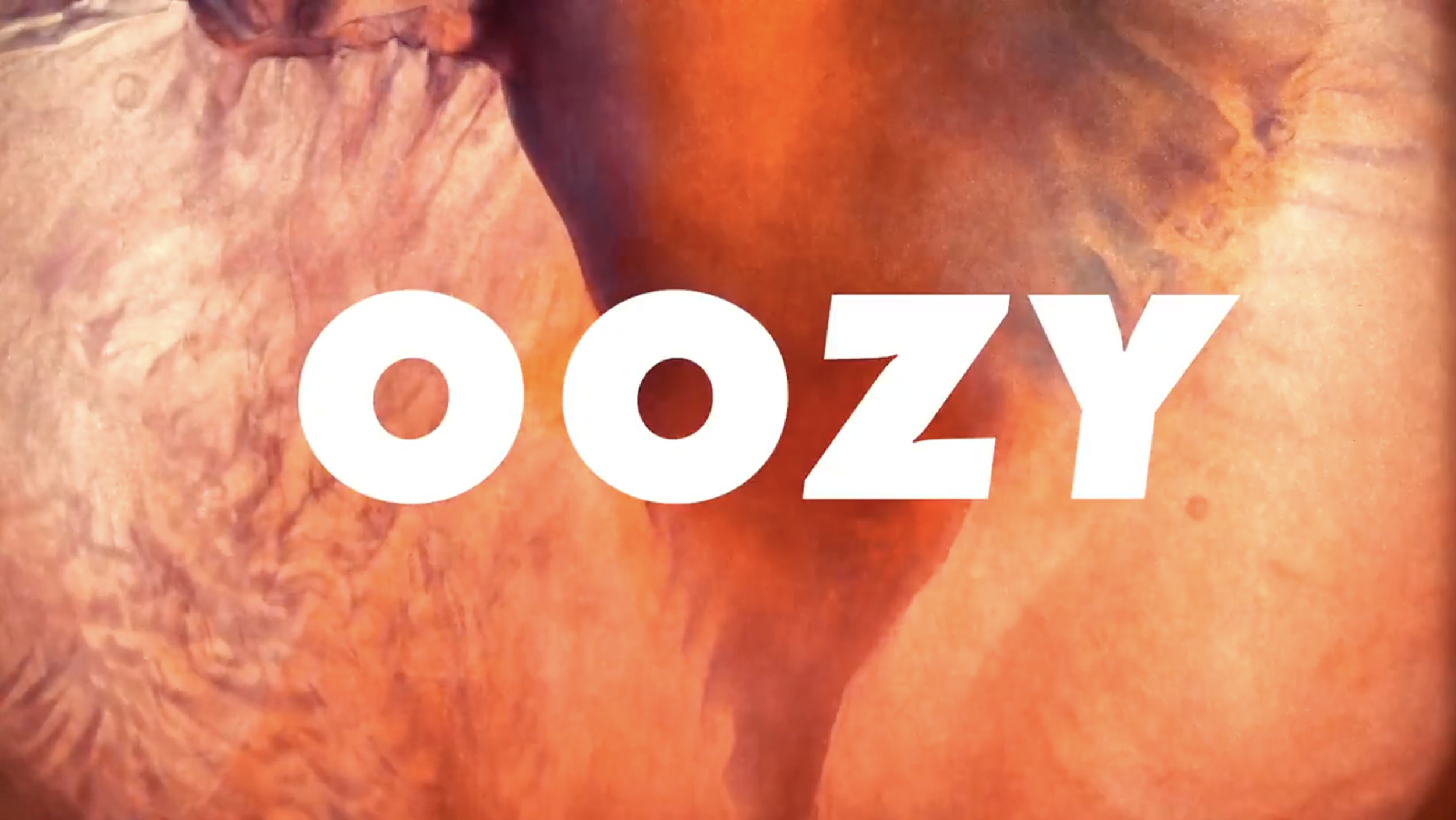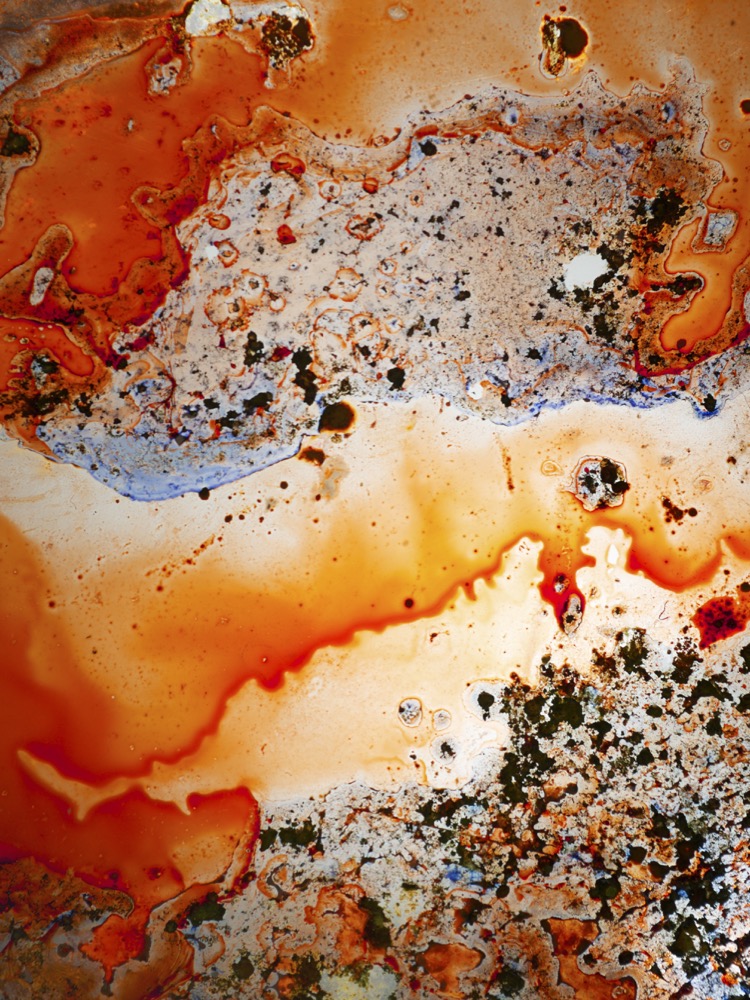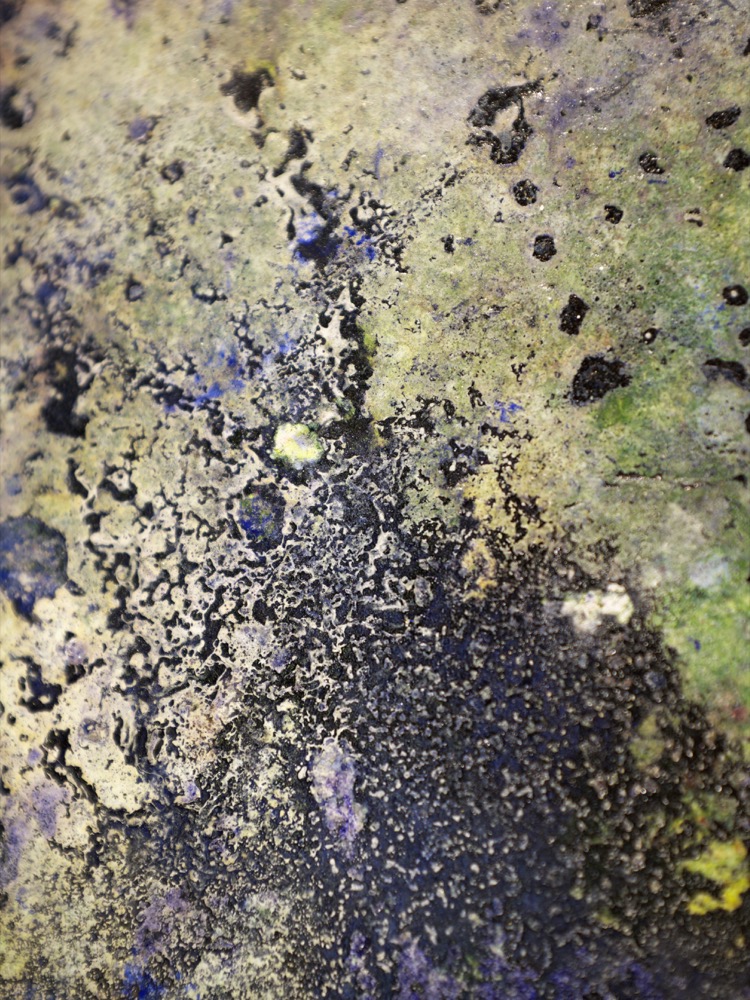Breath ○ Gathering ○ Warp, 2024
Collage on recycled Perspex, 70cm x 54cm. Classical-era painted fabric drapes and folds. At what point does a figurative image become abstract? What gets included and what gets omitted from the histories we tell and the maps we make?
Speechless, 2013–2025
Oil, acrylic, ink, dye, pigment, lacquer, salt, and sand on canvas. Layered paintings created over 12 years. Each new composition obscures the preceding layers while retaining vestiges of earlier forms, reflecting processes of loss, forgetting, and letting go.
That Sinking Feeling, 2018
‘Oumuamua, the first known interstellar object to pass through our solar system, moves past the earth, cold to the existential crisis facing the planet’s inhabitants. The scout from afar is strange, as are we. In fact, as we race to understand more, we become even stranger, and so do the objects and phenomena we encounter. That Sinking Feeling seeks to reflect our current predicament, the artefacts we create in our pursuit of progress, imagined futures (that may or may not contain us), and the complex emotional states we find ourselves in. With ARM (Navid Asghari and David Rogerson).
The Wild Open Archive, 2024
In Theory ○ All Things Considered ○ Unquiet. Collage on recycled Perspex, 51cm x 61cm. In 2019, the British Library launched a new marketing campaign that listed “Shops, Cafés, The whole wealth of human knowledge, endeavour and experience to date…” among their attractions. While tongue-in-cheek, this claim invoked the commonly held idea of an authoritative comprehensiveness among western institutions. In the age of (mis)information, AI, and expanding plurality of sources, these collage installations explore authorship, visual literacy, and the parameters of the digital-human experience.
Oozy, 2020
Three channel film and sound installation and performance with references to the histories of theatre, literature and cinema. The piece is concerned with what it feels like to be living through a period of intensifying alienation, and the tangled emotional states we find ourselves in. Curated for The Holden Gallery by Zoe Watson. With ARM (Navid Asghari and David Rogerson).
Botanical Magic, 2019
With Deiniol Williams, Lindsey Loughtman, and Manchester Museum. Grid of backlit antique glass magic lantern slides of seeds, cells, zoophytes, diatoms, cotton production, cocoa beans, breadfruit and palms, revealing the colonial and extractive histories embedded in the museum’s herbarium collections.
Feint, 2015
“Feint draws from a wide array of conceptual influences, from the tempting immersions of Roger Hiorns to Ernesto Neto’s attempts to connect the interior and exterior, and Tacita Dean’s projections and landscapes – the works position painting within a cinematic context, oversized and animated. As with Cindy Sherman’s desire to “make something out of the culture”, Moss’s work examines itself – the viewing is disrupted by the constantly changing light, the artifice slips.” – Sarah Faraday. The 72-page book documenting Feint at Fuse Art Space, Feint, features 100 close-up photos of the artworks by Chan-yang Kim and an essay on the work by Rowland Hill.
Untied States, text, 2014/2019
50 entries from the Diagnostic and Statistical Manual of Mental Disorders, software-translated five times to create space for poetically rethinking the vocabulary around psychology, neurology, and mental health. The British Psychological Society said of the DSM: “the general public are negatively affected by the continued and continuous medicalisation of their natural and normal responses to their experiences; responses which undoubtedly have distressing consequences… but which do not reflect illnesses so much as normal individual variation”.
Nil (detail)
625 printed digital paintings, each 8cm x 8cm, 2004. Before social media, Wikipedia, or AI image generation, digital painting allowed us to explore the parameters of our aesthetic impulses and art’s relationships with time and productivity. In 2001, as our world of visual and information overload was emerging, I began work on this series of small digital paintings. Creating a few of these images each week over the course of a year served to test my own ideas about taste, beauty, outmodedness, and obsolescence in art.

















































